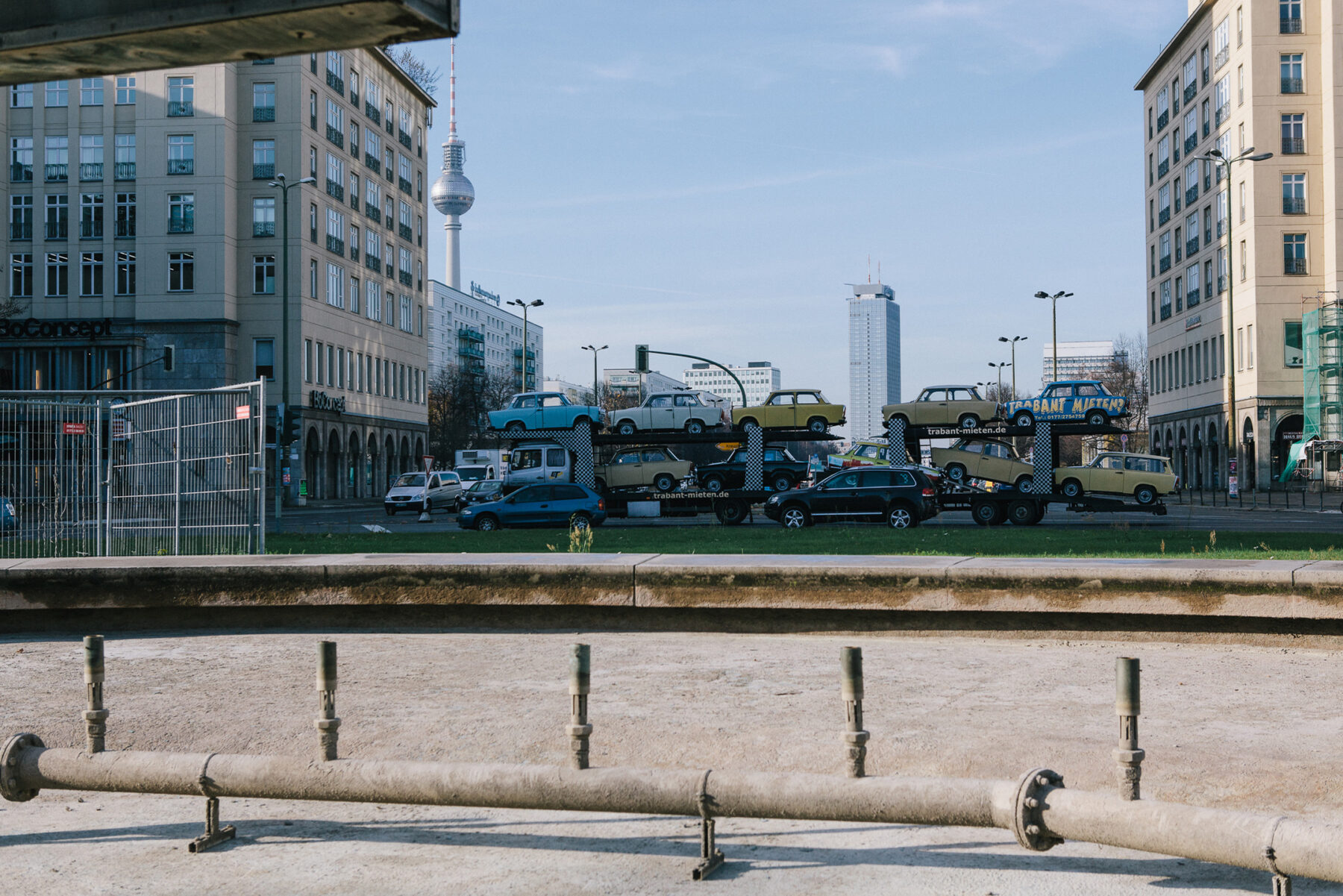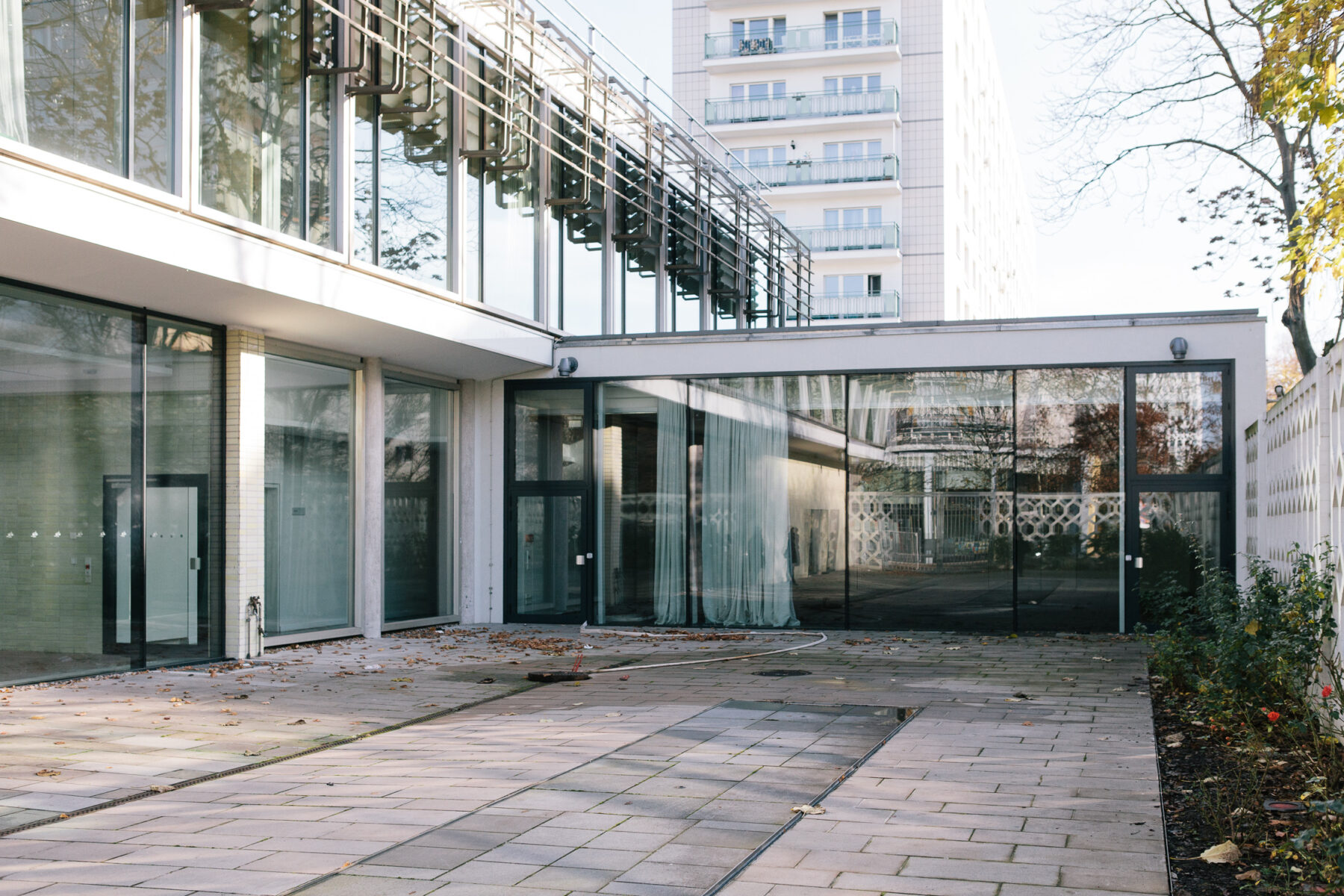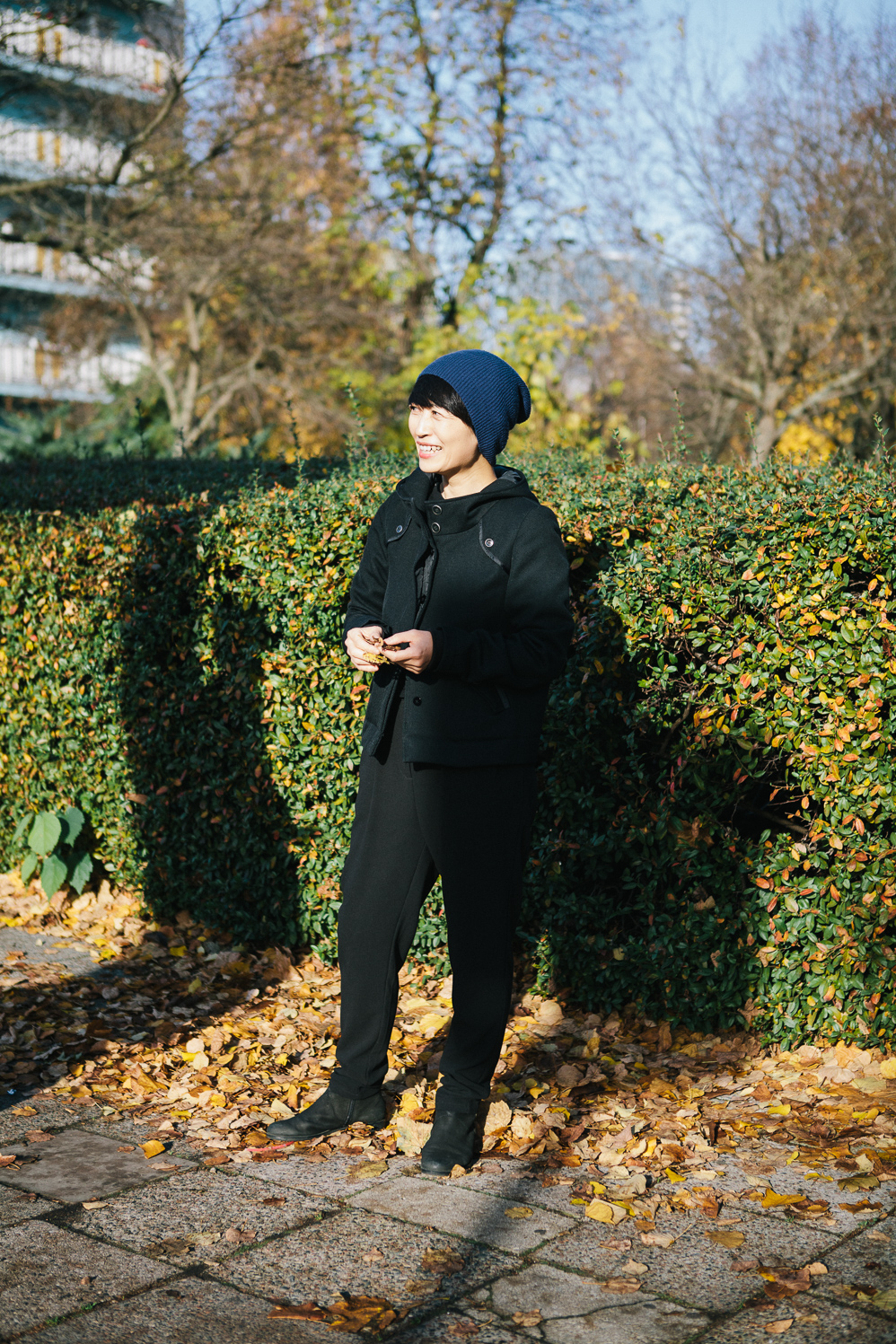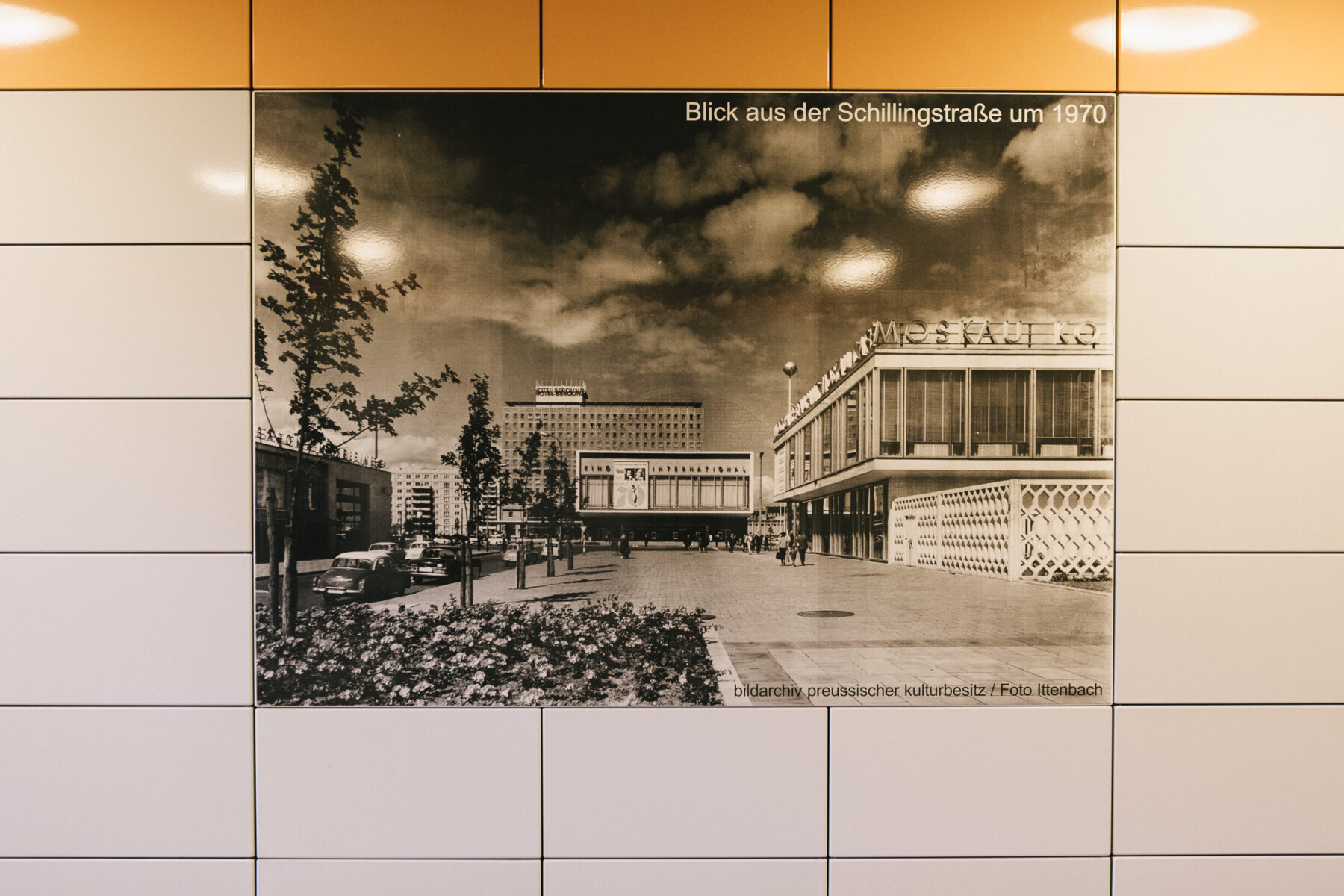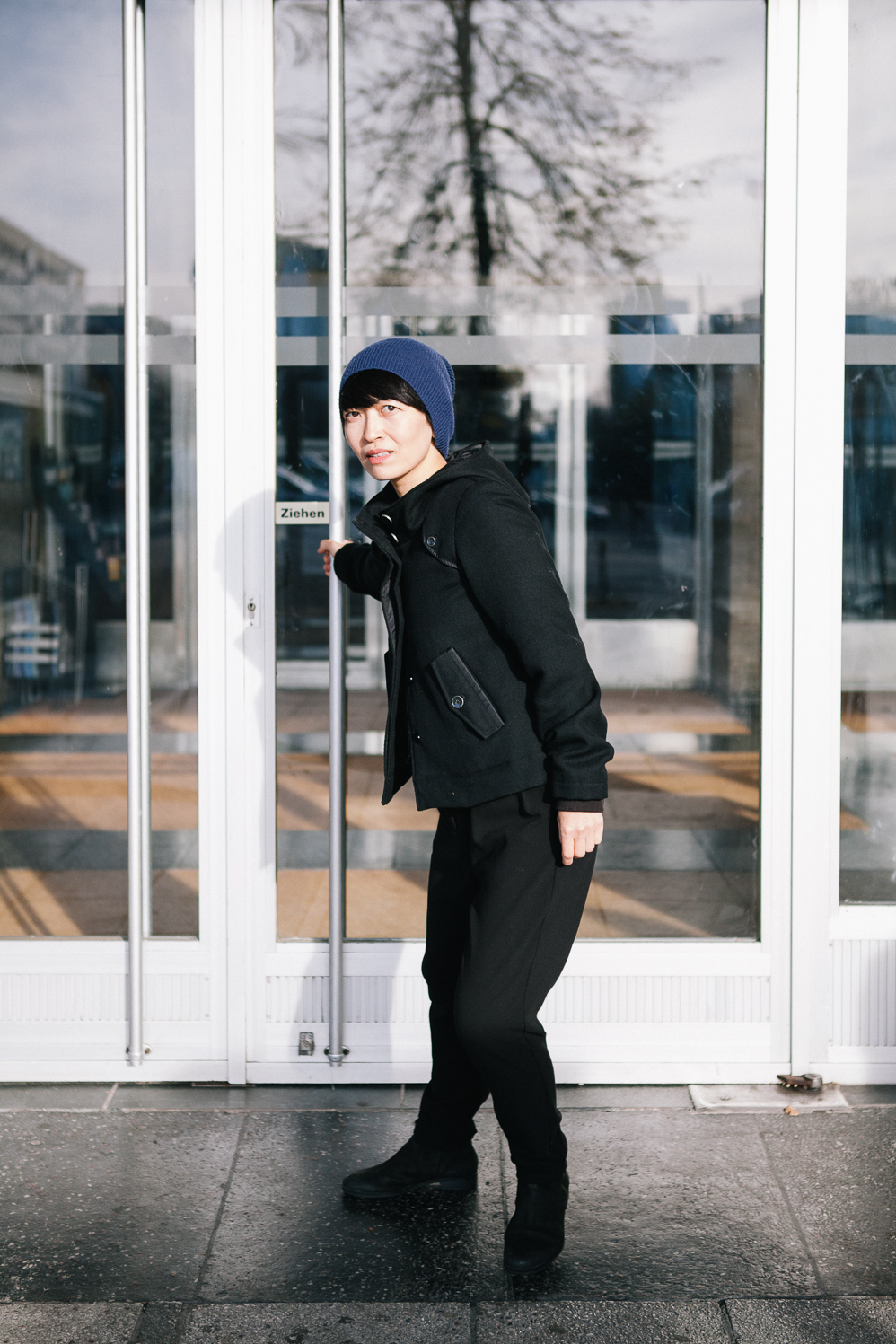Many believe there is no better city in Germany to live in as an artist than Berlin – and some would argue, the world. This is certainly true for Korean artist Sunah Choi who has called Berlin home for the past seven years.

Her journey up until this point has been defined by her interest in seeking out new horizons and an unwavering fascination for experiences beyond the familiar. We take a walk with Sunah to find out what she loves about her neighborhood of Strausberger Platz while hearing about her artistic practice.
After completing studies in Korean Literature and Language, Sunah changed course and left her hometown of Busan for Frankfurt to study Fine Arts at the prestigious Städelschule. Following the common artist path, she relocated to Berlin after graduating. Transfixed by the architectural landmarks surrounding the iconic Karl-Marx-Allee, her inquisitive “interest in being somewhere else,” led her to settle in an original GDR building that today acts as her dual living and working space. Located in the former East and intended as luxury apartments for workers, the 1950s structure designed by Hermann Henselmann is a heritage listed example of Stalinist “wedding-cake style” architecture.
This portrait is part of our ongoing collaboration with ZEIT Online who present a special curation of our pictures on ZEIT Magazin Online.






“When I moved to Berlin other areas had a reputation. There was of course the cosy Altbau Wohnung ideal. I didn’t want to live in Kreuzberg or Prenzlauer Berg, they were too popular. I was, however, really interested in this area of Berlin and the significance of these buildings. They were built for the people and represent a successful combination of practical living and impressive architecture.”
“I didn’t plan to come to this area, but I have become quite attached to it. I had no idea I would be here for so long.”
Despite living in Germany for 20 years and a home filled with meticulously catalogued art materials, Sunah still feels “somehow provisionally living abroad.” When discussing living overseas she explains, “this situation that I have placed myself in, away from my home country and family on the other side of the world, is somehow a provisional one. I try not to have my living space too homely, or for it to feel too convenient or comfortable. It is also my work space.” This sentiment could also be attributed to her active exhibition schedule and international residencies that has seen her travel to produce and present work in countries such as: Austria, Switzerland, Italy, Ireland, France, America and Japan.
“I find living in Berlin to be the perfect base, for me it is an easy place to live. I love the German language and the mentality of the people. There are a lot of like-minded, creative people living here.”
In her tranquil zen-like apartment Sunah has transported her minimal aesthetic. Man-made materials are contrasted with natural materials, like the stone bench in her kitchen and German oak sideboard veneer in the entrance hall. This tension is also located in her artwork with a lightness of balance and softness, offset by a heavy severity through the selection of materials and compositional structure. Her living environment and “perception of space” has a direct influence on her artistic practice. She references the urban environment in her work and sources materials such as leaves and stones from the street. Most recently she has been working on a series of cyanotypes – utilizing light exposure and leaves to create abstract photograms.



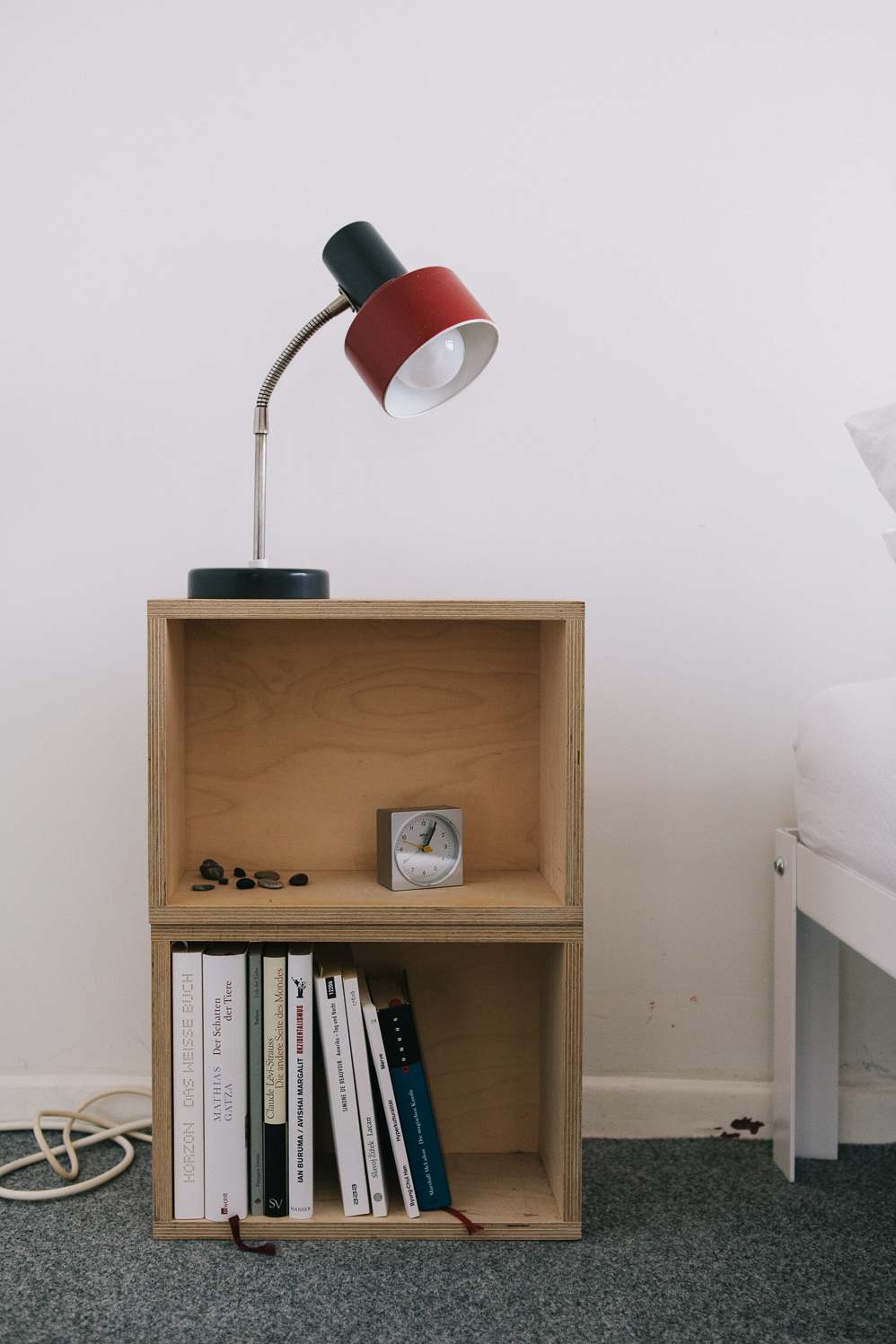







“Light is the material itself and the subject of this work. Using sunshine I capture shadows of the objects, which are not only imprints or representations. Using a very concrete and ordinary object, I create something abstract and compositional.”
After spending time chatting over barley tea and looking at some of Sunah’s previous work, this fervent collector reveals her deep connection to the area. Boxes of vintage postcards depicting Berlin’s Fernsehturm and Funkturm – monuments of the East and West – are uncovered and an extensive book collection that includes documentation of the work of sculptor Fritz Kühn, an inspirational figure for Sunah.

Sunah’s selected locations near Strausberger Platz
The “Floating Ring” Sculpture
A dominating, seemingly immutable vista in a ever-changing city. Of Berlin’s many faces, it would appear the area of Strausberger Platz holds the position as the most Berlin of them all. As soon as Sunah steps out her front door, she encounters Fritz Kühn’s iconic copper sculpture, the Floating Ring (1967), positioned in the center of Strausberger Platz’s traffic island.


As we dash across traffic, Sunah’s love of geometric modernist design is clear. Drawn to the sculpture, she walks around the base for closer inspection. Looking out onto it from her window each day, the fountain is a constant presence. In summer, water flows from 10am until 8pm every day. The sound of the water stopping represents the completion of a day; a small periodic ritual.
As a truck carrying vintage East German Trabant cars drives past, we take in the surrounding buildings with symmetrical facades that continue almost two kilometers down the almighty boulevard. Built by the German Democratic Republic, Karl-Marx-Allee is set to a cityscape crowned by the omnipresent Television Tower. While walking, Sunah discusses how the street was planned as a presentation to convey political strength.
“The buildings lining the street were intended to present a grand image. At street level you feel small and almost like you are part of a staged scene in a film. There are strong remnants from the past here.”
“Berlin is not a city that makes you feel entirely comfortable.”
Capitain Petzel Art Gallery
Traces of Soviet history abound in Sunah’s kiez. Constantly evaluating her surrounding environment, she reflects on the many changes in the area, with younger people moving in and new art galleries and cafes setting up shop. This flux is an important source of inspiration in her work. As she explains, “a place determines who you are.”
One such gallery is Capitain Petzel – one of her favorites. Owned by gallerist Gisela Capitain and her partner Friedrich Petzel, the impressive box-like Modernist glass structure is lined with colorful architectural ceramic tiles.
“It is a very special space as it does not have many walls and looks like a huge showcase, which is therefore unconventional and challenging for artists to exhibit in.”
The gallery presents a range of acclaimed international contemporary artists that include: Roe Ethridge, Wade Guyton and Seth Price.
A walk among the area’s architecture
During our walk beyond the soaring socialist classicist buildings, there is a gradation of architectural offerings from the 1950s that include a mixture of Plattenbau apartment blocks made from precast concrete slabs. The silence on the street is not something you would expect in the center of a major metropolis. This is one of the many aspects Sunah loves about the area.
“We are in the middle of the city but it is like an island. I really love the big streets, there is no chance of being bumped into or intruded upon. Berlin can feel like a big city, but at the same time, a small town with huge avenues which sounds funny. You never have the feeling that it is too crowded here, you always have your space.”
The historic Cafe Moskau
The next stop is Cafe Moskau which houses another of Sunah’s beloved Fritz Kühn sculptures. In the 1960s, the building was the GDR’s largest cafe and restaurant. At that time Cafe Moskau had sister cafes in other cities under communist rule such as Moscow, Budapest, Warsaw, Bucharest, Sofia and Prague. Today it is the only building that stands in its original form.
After the reunification the venue was used as a nightclub and today is rented out as a business conference center. Designed by architect Josef Kaiser, the distinct facade is covered with an impressive textural mosaic entitled, “From the Life of the People of the Soviet Union” designed by painter Bert Heller. Extending from the outside to the inside, the work depicts a scene epitomizing Soviet ideals: a father plays a guitar, mothers dance and children play. There is even a life-size imitation Sputnik satellite adorning the entrance, promoting the Soviet Union’s space travel achievements.
Walking through the vast open interior spaces lined with glass from floor to ceiling, uninterrupted lines of vision are available onto the street through the building’s transparent, open design. We arrive at the central atrium where Fritz Kühn’s two and a half meter steel sculpture Fountainsculpture (1965) takes pride of place. The harmony and balance located in such an industrial object finds commonalities in Sunah’s own artistic interest in natural forms and repetition.
Schillingstrasse Train Station
Passing through Schillingstrasse underground train station, we descend into the pedestrian corridor. Orange colored enamel steel plates line the walls alongside historical black and white photos that display the streetscape in former times including the 1960s when the station was being rebuilt.
Sunah points out various locations in the photos and explains how the surrounding area and buildings have changed. As we step outside she picks up some autumnal leaves from the pavement deemed suitable for her work. Schillingstrasse is connected to the U5 train line, just one station away from Alexanderplatz. When headed for Mitte, Sunah often prefers to walk the short distance rather than taking the train.
Kino International
Concluding our walking tour, we visit the Kino International – another local architectural landmark and example of European Modernist architecture. Built by Josef Kaiser in 1963, the cinema originally screened the East German Film Production (DEFA) film premieres. The white detailed relief embedded into the building displays its strong decorative elements. Today the cinema is open to the public with a program of alternative arthouse films.
Sunah thank you so much for showing us the Strausberger Platz neighborhood so thoughtfully. It has been wonderful to gain an insight into the history of the area while hearing about your personal connections that extend to your artistic practice.
Look for Sunah’s artistic work on her website.
Photography: Philipp Langenheim
Interview & Text: Rachael Vance












